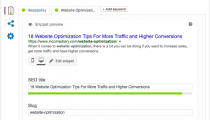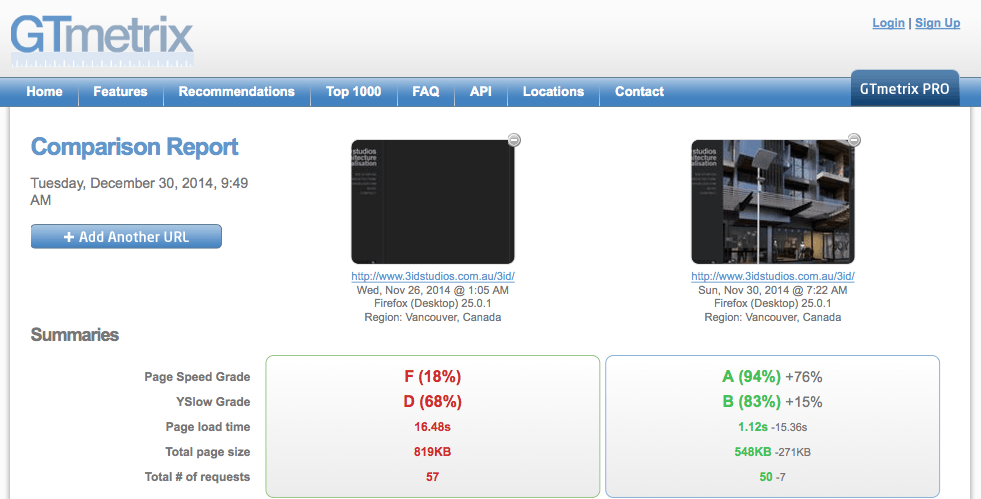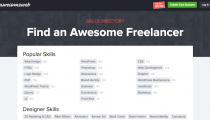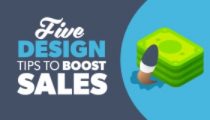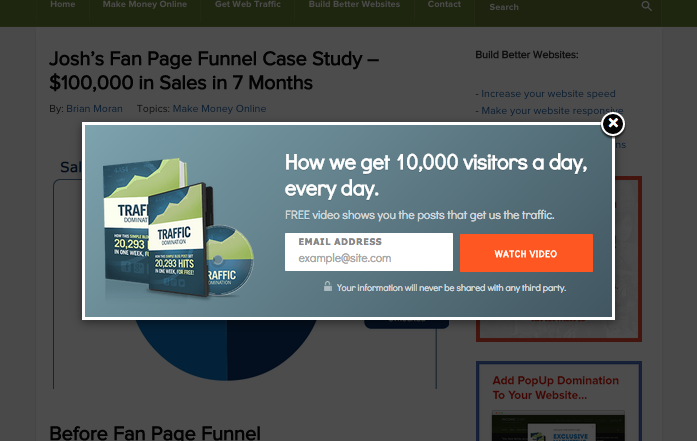How Do I Start An Internet Business Pt 2 – Establishing The Value Ladder
Before you begin reading this article be sure that you’ve read Part 1 of this “How Do I Start An Internet Business” Startup series. The upcoming steps and information are based on the assumption that you have taken the necessary action to enable adequate preparation to move forward with creating your products and mapping out your value ladder – detailing your products and services in ascending order of value and price.
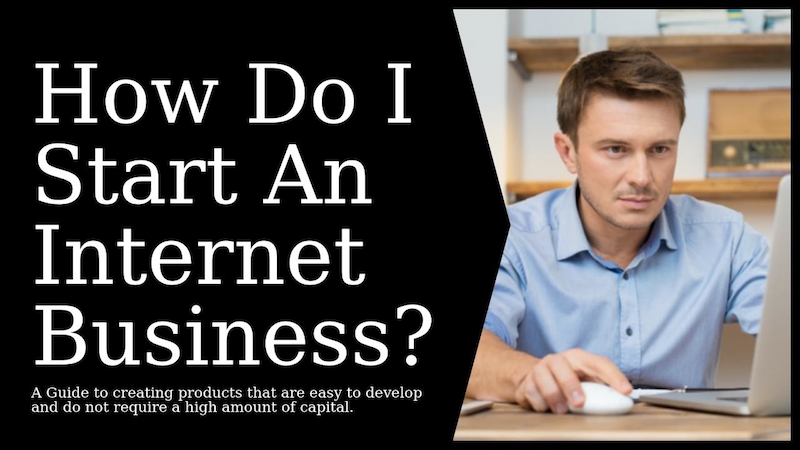
In addition, please note that throughout this process we are not going to worry about traffic and/or marketing channels. For now, our sole focus is building our products as quickly and efficiently as possible.
We want to create quality products but quite honestly it doesn’t make sense to spend an excessive amount of time on product development before we confirm whether or not people are willing to pay for these products.
Instead we will focus on creating products that are easy to develop and do not require a high amount of capital.
These are not the only products you can offer but just remember that if it is going to take you a year to build out one of your four products then it may not be worth it. You can always add more products and/or enhance current products as your business evolves.
The goal of this article is to give you the right amount of information so you can successfully build your four products and create the funnel that brings your customer up through the value ladder. Once you have this in place you’re ready for Part 3 which focuses on driving traffic to your funnel.
How The Value Ladder Works
Initially a customer may buy a relatively low ticket item – but as your relationship with them builds and you prove that you GIVE VALUE that customer will buy further products from you, increasing in value as they go up the Value Ladder.
Every successful business has a value ladder – a starter product that leads to better and more expensive products and services as the customer / supplier relationship grows. As an example, a dentist may start out with offering a teeth cleaning service – which expands to teeth whitening and later more expensive cosmetic services.

It is also important to remember, people will pay more for the same information packaged in different ways.
For example the value of Text (PDF or book) is quite different from say Audio (CD). Book publishers regularly make best sellers available as a CD for this reason – and we as Internet Marketers can do the same.
Likewise the value of a video over an audio is usually considered greater – and going further, a workshop or live training (with essentially similar information) will be considered the most valuable of the lot
Start an Internet Business – My Example Value Ladder
My niche is publishing and writing – and the following is my product offering (and value ladder) that I use for the services I offer to people who would like to write a book and become a published author.
Remember – this is just my example value ladder – your product offering and the format of the products will almost certainly be different. The point is to have a range of products to offer your customers which increases in value.
Product #1 (Bait) – A Free mini-course that provides a specific strategy to help people struggling to complete their book. In my example I am actually going to create a video based first product because it is a medium I am comfortable with. If video is too much of a first step for you, then create a PDF or Ebook as your ‘bait’ product.
Talking of ‘bait – it is unfortunate that ‘bait’ is sometimes associated with deceit – as in ‘bait and switch’. That is not what I am referring to here – rather it is an opening offer, an incentive, to persuade buyers to try you out)
Product #2 – An elaborate detailed course that incorporates weekly coaching webinars and community membership. (That is charged for) So product 2 is the first product I charge anything – product 1 is purely about lead generation.
I appreciate not everyone is going to be comfortable with offering weekly coaching as Product 2 – so again I emphasis this is an example only.
If we take IncomeDiary as an example – the initial ‘product’ is a Free Video which explains: How one single blog post can attract 20,000 Free Visitors in a week…

This free video introduces viewers to Product No2 – Traffic Domination
The main point here, is that at the very least you need a Product 1 (Bait) and a Product 2 in your value ladder, before moving on to products 3 and 4 (Or even Products 5 or 6 if you wish)
Product #3 – A one-on-one coaching program. (I hold their hand as they write their book)
Product #4 – Ghostwriting services. (I write the book for my client)
Other examples of Products 3 and 4 could be: A seminar, Mastermind Group, a Done For You Service (example Photoblogger) Monthly Membership Site or Software (Example Popup Domination)
A few points before we discuss how to build each product. First, though your specific products will vary from the example provided above, I am using these particular examples because they are easy to build and easily scaled at a later time once we better understand the demand for each product. I recommend you utilize the same type of products:
Product #1 – Information product that can be built in a day or two.
Product #2 – Information product that can be built in a few weeks.
Product #3 – A service product that requires your time but only demands an organized scheduling system (which at first can be easily managed by you alone) and a payment process.
Product #4 – A similar service that offers more value to customers and only entails the same organized scheduling and payment system.
Secondly, products #3 and #4 actually require very little time on the front end. You simply offer it to your customers who purchased or shown interest your second product. We will discuss how to carry out the transaction when a client moves forward with a purchase for these products.
Thirdly and finally, be sure that you have your own value ladder blueprint that meets the criteria specified above. If not, take a few minutes to get this completed because you’re about to begin the building process and you’ll want to avoid taking the time to create products that you don’t end up selling. The steps offered below for each product will be operating under the assumption that you’ll be sticking to the same format as provided above. If this is incorrect and you’re offering one of your products within a different format just be sure to do the necessary research to determine the steps you need to take to take to go from idea to reality.
Start an Internet Business – Creating Information Product #1
In this value ladder example, I am creating videos to help people struggling to complete their book.
However, regardless of the medium you use the research and process are much the same. (So if your first product is an Ebook – substitute the word video for Ebook)
1.) Determine what your four to five videos are going to be about.
To do this, you’re going to develop your curriculum outline for Product #2. With this information, you can extract the key ideas and important details to include in your mini course videos for Product #1.(Essentially, in this example – Product 1 is an abbreviated version of the more comprehensive information buyers will get in Product2)
The videos I would create for the example mini-course would be as follows:
Video #1 – Developing your main idea
Video #2 – Brain dumping and creating an outline
Video #3 – Creating an outline for each chapter
Video #4 – Filling in the outline with great content
Quick Tip: If the thought of developing your course curriculum is daunting then I recommend you begin the course creation process through Udemy.
The free course Udemy offers, does a fantastic job prompting instructors to outline their course and develop the key information. Additionally, you’ll get a head start on developing Product #2.
2.) Develop an outline for each video. I personally do not recommend writing a script because I believe most potential clients want to know that they would be working with somebody that is personable and a script reader doesn’t project interpersonal skills. Each video should be approximately 3 to 7 minutes.
3.a) Set up your video capturing equipment. For the mini course I recommend you use your smart phone (yes I am assuming you have one). Do not worry about making sure these videos are over the top professional looking. The value is in the content you provide, not the lighting or audio. Just avoid anything that could cause a viewer to be distracted (i.e. dogs barking, people in the background, etc.). If you’re using your phone to record yourself, I recommend you purchase a tripod so you can be sure to keep the appropriate angle or ask a friend to help you film.
3.b) You’re going to develop Power Point, Prezi, or Keynote presentations that provide the content you need for each video. Then you’re going to use screencast software such as Jing (free) of Screenflow (for Mac) to enable you to add verbal commentary to the presentations.
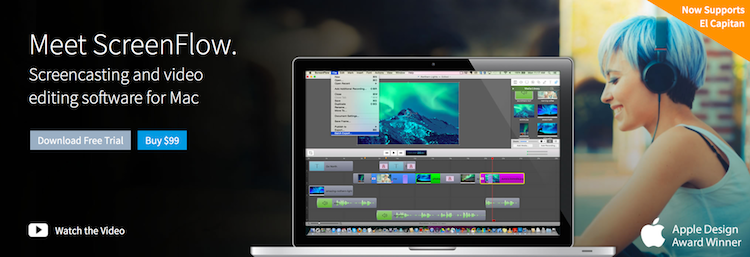
These videos can serve as an extension or an alternative to the videos that show your face (some people are uncomfortable being in front of camera).
Check out the Udemy blog for tips on video creation.
Quick Tip: Be sure to include a sales pitch in your final video. Something along the lines of “Now you that you’ve completed the mini-course hopefully you’ve begun taking action and achieving your goals. If you feel like you need a bit more support then I recommend you check out my other course that offers all the information we’ve covered and more in much greater detail, just click the link in the next email you get from me to learn more.”
4.) Once you have your videos then you’re ready to offer them to potential clients. There are lots of choices for video hosting – but if your budget allows a good place to start is Wistia.com.

If budget is small you can even upload each video to youtube.com but be sure to set it to “unlisted”. This will prevent the video from coming up if somebody searches your particular content area. This step is completed when you have a link for each video. The disadvantage of course is that once people know the URL of a video they can easily share with people who have not bought the product.
If however your initial product is a PDF/ Ebook then for most of us, it will be the relatively simple task of uploading via Cpanel
Again, you will wish to consider security and the best way to do that is to create a members area that requires a password. There are a lot of software options that allow you to do that – you will find some examples here. Another alternative is to use a service such as Amazon Web Services
5.) Use mailchimp.com or Aweber to create a sequence of scheduled emails. You want to set the sequence to begin immediately when a person subscribes and then provide one link per day until all the video links have been shared. Each email should summarize the purpose of the video they are about to watch in addition to a few action steps and indicators for successful completion.
6.) Offer an email that is sent no more than a day after the final video email that offers the link to your Product #2 (we will discuss where that link will come from momentarily).
Just like that you have an email based video mini-course.
Creating Information Product #2
This next product is going to take a little bit longer to create as it should cover much more detail. The good news is if you aren’t really interested in creating your own website, you don’t have to. Just be aware that when you do this you will give up potential revenue for each sale, so when the time comes to price, do so accordingly. If you are able to create your own website and you want your course available for purchase then I recommend you invest in Zippy Course software.

Assuming you’re not ready to create your own website then as stated earlier, we’re going to continue to create our course via Udemy.com. This platform is excellent for two reasons. First, it is very simple to use and second, it’s process does a great job helping the course creator stay organized and focused when developing content. Learn more about Udemy course creation here.
Quick Tip: As you develop your course on Udemy.com it is acceptable to include the videos from your mini course but be sure to add a tremendous amount of additional value. If your customer feels as though they just paid for something they’ve already seen for free you’ll lose them.
Rather than provide you with the specific steps for Product #2 I recommend you enroll in The official (produced by Udemy) guide to creating your own Udemy course, from start to finish.
Completing this free course will teach you how to create effective Udemy courses. In addition to providing you with the necessary resources and knowledge to produce your own course you’ll also gain the student perspective as well. Think about what you like and don’t like about your course as the student and create a course that takes advantages of these strengths while avoiding or improveing upon the weaknesses.
When you finish your course you’ll be able to generate a link that takes people directly to your course title page. This is the link you want to share in your final email of your Product #1 email sequence.
One Important Note: We do not recommend Udemy if ultimately you want to sell high ticket Niche Training Courses – but it is a great place to start with short training course (1 – 2 hrs) and learn the business and get experience.
Creating Information Products #3 and #4
One of my favorite parts about creating the last two products is that while the front end time for the first two products can be a bit time consuming Products #3 and #4 are really just about structuring the offer and facilitating the transaction. This only becomes complicated if you try and offer these products in a way that already has them adjusted to be scaled. In other words, if you take the time to create the automation right away then you’re going to focusing your energy on something that isn’t needed until you actually have a significant amount of customers.
What To Do Next – Based On My Value Ladder
I emphasis that the following approach is rather personal – many Internet Marketers will prefer to have a more streamlined and automated process – this is just what I do. It does not have to be what you do.
Step 1: Using your email service ( eg Aweber ) be sure to automate messages to anybody that clicks on the link that would take them to your Product #2 offering. This is pretty easy to do when using Aweber but if you find yourself struggling just check out their tutorial videos, they’re extremely helpful.
If you use Udemy.com as your course platform you may not be sure as to whether or not they actually made the purchase but to keep things simple lets assume there is interest since they at the very least clicked on the link you provided in your email that followed your Product #1: Mini-Course.
Step 2: Construct a message that says something along these lines…
“Hi Name,
So I see that you were interested in the Product #2 Course Title. Did you end up signing up? If so, I welcome your feedback. Either way, if you’re feeling like progress is slower than you were hoping don’t beat yourself up, it always is.
If you’re interested, I’d be happy to schedule a coaching call to see if we can get you on the fast track to achieving your goals.
Just reply to this email and we’ll take it from there.
Talk to you soon.
Your Name.
p.s. Just a heads up I only have limited spots to schedule coaching calls in so if you are interested try to let me know as soon as you can.”
Useful Resource: Making Money with Email Marketing and an Autoresponder Series
Step 3: Check your emails and follow up by sharing your rates. Feel free to negotiate rates as well if they respond with a no. Remember, testimonials will help your business so the more flexible you can be in the beginning the stronger you’ll be able to position yourself when you begin creating sales pages as you automate and scale (which is discussed in Part 4 of this series). If a customer responds by saying they can’t afford the product counter by offering a reduced rate in exchange for a testimonial afterwards.
Quick Tip: I recommend you use to Skype to facilitate your coaching calls. This will enable you to speak to anybody, anywhere in the world at no charge.
Step 4: When you’re on your coaching call be sure to mention that you also offer additional services. In my example the final product in my value ladder is ghostwriting. For you it may be personal mentoring or consulting or a mastermind.
Basically this final product is for the person who desperately wants to solve a specific goal but for some reason can’t seem to make it happen. Therefore, for a fee, you offer to do it for them. Same deal as step three, remember to be flexible with your rates since you are in the very beginning phases. You want to gain experience and testimonials so you can become an authority within your chosen niche.
Quick Tip: If you’re third product isn’t a call that is totally fine, just be sure to include the offer for Product #4. You do not need to include the price in the offer because again initially we’re going to focus on being flexible with these rates. We will eventually fine tune the process and begin generating consistent revenue. I appreciate this goes against the advice of most Internet Marketing Gurus – but my focus here is getting you started on the lowest possible budget.
Step 5: Whether a customer took advantage of both products #3 and #4 or just one of them, to facilitate payment create a PayPal account if you do not already have one. With your account you can easily create and send invoices. Just be sure to mention to your clients that you’ll be facilitating payment via PayPal. It is important they are able and comfortable to pay this way.
Well there you have it. A fully functioning value ladder product offering. Once each product is up and running you’re ready to move onto to Part 3 which covers driving traffic to Product #1, from there you up sell with authentic, valuable products that genuinely solve problems for people.
Before moving on to Part 3 of this series (Driving Traffic To Your Funnel) it is important to wrap up a few loose ends.
First, this process is not a perfect system by any means. However, it is an efficient approach to creating a value ladder that can begin generating revenue. Don’t invest a ton of time into something until you develop a sense of the value it brings to customers. Once you begin generating consistent revenue then you can enhance and expand upon your offerings. Moreover, when your business takes off you’ll have capital to reinvest to help scale more efficiently. Until then keep the overheard low and keep the systems simple.
Second, I understand you may not want to offer the same exact products that I used as examples. Don’t let that discourage you. Research how to develop the product you’re interested in creating and move forward. Do not become stuck in analysis paralysis.
Additionally, be sure that all of your products focus on solving the same problem. Notice that all of the products offered in the example focused on helping people finish their first draft. All four products offered different approaches and solutions to solving the same problem. Over time you can create more products and offerings based on customer feedback. Once you have your email list that began accumulating names from Product #1 you can always reach out and ask them what they need help with. Then you just build products that serve those needs.
Third, throughout this article you’ve been instructed to create a significant amount of emails to customers. If you struggle with constructing an effective message then I strongly recommend DotCom Secrets by Russell Brunson to help with the necessary copy. It provides specific scripts that you can use to maximize the impact of each email you send. You can see one of Russell’s Value Ladders below:

Fourth, this article intentionally skips the need for creating your own website. This does not mean you will not or should not have one. Instead, we will focus on different options for this in Part 3 when we assess the type of traffic we want. This information in turn will help clarify what website or webpage options makes most sense for you.
Finally, as you embark upon your product development create deadlines for yourself and stick to them. Aim to create your course in no more than one month and if possible even sooner. If you can create a course that offers an hour to two hours of amazing helpful content then publish it and offer it. You can always add to it as you go.
Shoot first, aim second.
See you in Part 3!
Author Bio: Michael Marani is a successful author, and online entrepreneur best known for The Amazon Sales Formula
"Do Not Write Another Blog Post Until You Watch This Free Video..."
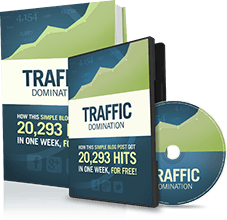
Watch this free video to learn...
- How I got over 10,000,000 people to visit my websites.
- The types of blog post that got me all that traffic.
- How to get someone else to do it for you!



